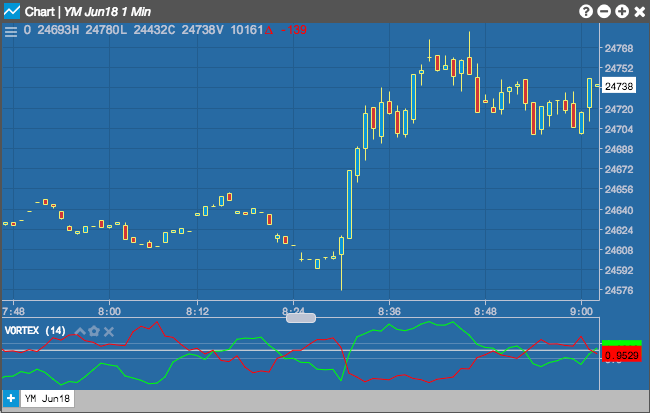Charts
Vortex Indicator
The Vortex Indicator consists of two oscillators (VI+ and VI-) used for identifying the start and direction of a market trend. When the VI+ and VI- cross, it generally indicates a market trend. The trend is up when VI+ stays above VI-, and the market trend is down when VI- crosses below VI+.

Configuration Options

- Period: Number of bars to use in the calculations.
- Color Selectors: Colors to use for graph elements.
- Over Zones Enabled: Whether to shade the area between the plot and the horizontal overbought and oversold levels.
- Over Bought: Overbought quantity
- Over Sold: Oversold quantity
- Display Axis Label: Whether to display the most recent value on the Y axis.
Formula
The calculation for the indicator is divided into three parts:
-
Uptrend and downtrend movement:
- \( VM+ = {Current High} - {Prior Low} \)
- \( VM- = CurrentLow - PriorHigh \)
- \( \sum_{n=1}^{x} VM\verb "+" \)
- \( \sum_{n=1}^{x} {VM\verb "-"} \)
-
True Range (TR) is the greatest of:
- \( CurrentHigh - CurrentLow \)
- \( \left | CurrentHigh - PrevioiusClose \right | \)
- \( \left | CurrentHigh - CurrentLow \right | \)
- \( \left | CurrentHigh - CurrentLow \right | \)
-
Normalize uptrend downtrend movement:
- \( VIx+ = \frac{VMx+}{TRx} \)
- \( VIx- = \frac{VMx-}{TRx} \)